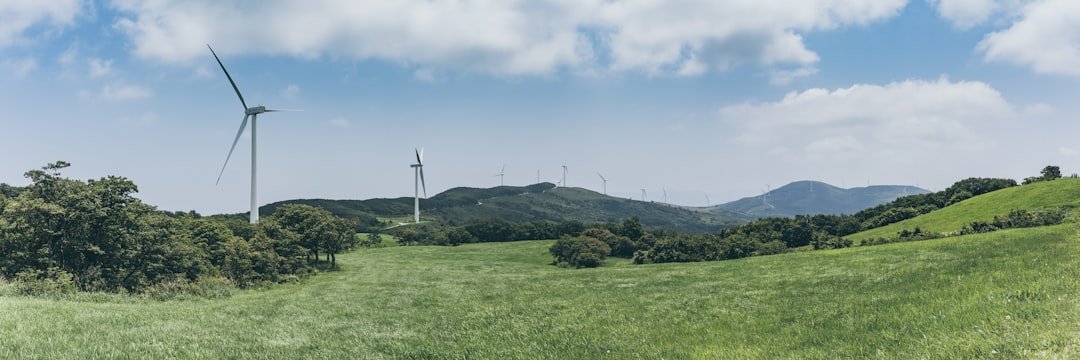The Effects of Climate Change on Polar Bears: With far-reaching effects on numerous species worldwide, climate change has become one of the 21st century’s most urgent environmental issues. Polar bears, the iconic residents of the Arctic, are among the most impacted. Polar bears’ lives are becoming more and more precarious as temperatures rise and ice caps melt. The condition of their habitat, which is rapidly declining as a result of climate change, is closely related to their survival. Beyond just the loss of habitat, this phenomenon has a number of ecological, behavioral, and physiological repercussions that endanger these magnificent animals’ continued existence.
Key Takeaways
- Climate change is causing a decline in polar bear populations due to habitat loss and reduced hunting and feeding opportunities.
- Melting ice is a key factor in the loss of polar bear habitat, making it difficult for them to hunt for food and find suitable resting and breeding grounds.
- The decline in sea ice is affecting polar bear hunting and feeding patterns, leading to decreased body condition and reproductive success.
- The relationship between melting ice and polar bear population decline is a direct result of the loss of their primary habitat and food sources.
- Polar bears play a crucial role in the Arctic ecosystem, as top predators and indicators of the health of the environment.
The delicate balance that polar bears depend on for survival has been upset by the substantial changes brought about by the warming climate in the Arctic ecosystem. Polar bears are compelled to travel farther in pursuit of food and appropriate breeding grounds as sea ice melts. Malnutrition and a lower rate of successful reproduction can result from this increased energy expenditure, making their problems even worse. In addition to influencing their hunting habits, the loss of sea ice also has an effect on bears’ social structures & behaviors because it forces them to be closer to one another, which increases competition for limited resources.
The loss of polar bear habitat is largely caused by melting ice, which is also a crucial indicator of climate change. The vast stretches of sea ice that define the Arctic region serve as vital platforms for polar bears’ main prey, seals. The amount & thickness of sea ice have drastically decreased as global temperatures have increased, especially in the summer. Bears depend on stable ice to raise their cubs, so this decrease in ice cover not only restricts their food supply but also interferes with their ability to breed and nurse. Polar bear populations are significantly impacted by the melting of sea ice. Bears are being forced to travel farther and farther on land, where food supplies are limited, as hunting grounds become less accessible.
This change may result in more interactions between humans and bears as the latter look for other food sources, which could be harmful to both species. Moreover, habitat fragmentation brought on by the melting ice isolates bear populations & reduces genetic diversity. Their long-term survival is at risk as these animals grow more susceptible to changes in their surroundings. Sea ice provides a platform for polar bears’ main hunting activity, which is capturing seals, and its availability is closely related to the bears’ hunting and feeding habits. It is getting harder for polar bears to hunt successfully as sea ice melts more quickly due to climate change. Because of the decreased amount of ice cover, bears have to swim farther in search of stable platforms from which to hunt, which uses more energy and reduces hunting success.
| Year | Polar Bear Population | Arctic Sea Ice Minimum |
|---|---|---|
| 1993 | 21,470 | 8.4 million square kilometers |
| 2005 | 20,000-25,000 | 5.32 million square kilometers |
| 2018 | 22,000-31,000 | 4.59 million square kilometers |
This change has broader effects on population dynamics and general health in addition to affecting individual bears. Also, the distribution & abundance of seal populations are changing due to climate change, which makes polar bear hunting even more challenging. Seals may relocate to regions with less ice cover where polar bears cannot reach them as a result of their adaptation to shifting conditions. Polar bear malnutrition may result from this predator-prey mismatch, especially for nursing mothers who need to store a lot of energy to sustain their young. Lower birth rates and higher rates of young bear mortality can result from a decline in hunting success, which can have a domino effect on bear populations.
The intricate interaction of environmental factors between melting ice and the decline in polar bear populations emphasizes how urgent it is to address climate change. Polar bear populations are threatened by a number of issues that arise from the ongoing retreat of sea ice. According to research, habitat loss and a lack of food sources have already caused considerable declines in some populations. Because dwindling populations find it difficult to adjust to a constantly shifting environment, these changes have both immediate and long-term effects. Melting ice has an effect on polar bear reproduction in addition to its direct effects on hunting and feeding habits.
During the crucial time of raising cubs, female polar bears depend on stable sea ice for denning. As the amount of ice cover decreases, mothers might have to leave their dens or give birth in less safe places, making their cubs more vulnerable. A feedback loop that worsens population decline is produced by decreased food availability and impaired breeding success.
Polar bear populations are in a delicate situation as climate change continues to alter the Arctic landscape. In order to keep the Arctic ecosystem healthy and in balance, polar bears are essential. Being apex predators, they aid in controlling seal populations, which has an impact on the general well-being of marine environments.
Polar bears support biodiversity and guarantee that a variety of species can flourish in their habitats by managing prey populations. Their decline indicates more significant ecological problems that may have far-reaching effects, as their presence is a sign of a healthy Arctic environment. In addition, polar bears play a crucial role in Arctic Indigenous communities and cultures. They are frequently mentioned in customs and stories and have great cultural significance.
In addition to endangering biodiversity, the decline in polar bear populations has an effect on Indigenous peoples’ cultural heritage and means of subsistence, as these animals are essential to their identity and way of life. Therefore, preserving polar bears is not only an environmental concern but also a social justice and cultural preservation issue. Conservation initiatives at multiple levels. At the local, national, & international levels, numerous conservation initiatives have been launched in response to the precipitous drop in polar bear populations brought on by climate change.
Wildlife conservation organizations put forth endless effort to advocate for policies that will mitigate climate change and to increase public awareness of the predicament of polar bears. Among these efforts are habitat preservation projects, studies aimed at comprehending bear ecology and behavior, and community engagement tactics that include Indigenous peoples in conservation planning. Polar Bear Protection Zones. A prominent strategy is the creation of protected areas where polar bears can flourish unhindered by people. Researchers can study bear populations in a controlled setting at these sanctuaries, which also offer vital habitats for hunting and breeding.
International Collaboration and Cooperation. International accords like the Polar Bear Conservation Plan also seek to coordinate Arctic countries’ efforts to guarantee sustainable management methods that safeguard polar bears and their habitats. These programs aim to develop a thorough plan for protecting polar bears from the effects of climate change by encouraging cooperation among stakeholders.
As scientists continue to track changes in their habitats & populations, the future of polar bears in a warming climate is still unclear. Numerous polar bear populations may experience significant declines or possibly extinction by the end of this century if current trends continue, according to projections. Governments, organizations, and individuals alike must act immediately to address the existential threat posed by the continuous loss of sea ice. Polar bears have a bleak future if substantial measures are not taken to reduce greenhouse gas emissions and slow down climate change. However, if global action is taken, there is still hope for these amazing creatures.
Reducing carbon footprints, switching to renewable energy sources, and encouraging sustainable practices are just a few of the ways that humanity can contribute to the preservation of the Arctic environment, which is essential to polar bear survival. Further studies of polar bear ecology will also shed light on how resilient and adaptive these animals are to changes in their surroundings. Individual acts can also have a big impact, even though major policy changes are necessary to combat climate change and save polar bears. By adopting simple lifestyle modifications like taking public transportation, saving energy at home, and supporting sustainable practices and products, people can help reduce their carbon footprints. People can contribute to grassroots climate change mitigation by reducing waste and making thoughtful consumption decisions.
Also, spreading knowledge about the predicament of polar bears can motivate others to act as well. Individual efforts can be strengthened by supporting groups devoted to wildlife protection or participating in community projects centered on environmental conservation. A collective movement toward a more sustainable future for polar bears and the planet can be sparked by individuals supporting local and national policies that prioritize wildlife conservation and climate action. To sum up, the effects of climate change on polar bears are extensive and diverse, influencing their habitat, hunting habits, population patterns, and ecological importance in the Arctic ecosystem. Even though melting ice and shifting environmental conditions present many difficulties, these iconic animals have hope thanks to coordinated conservation efforts.
Humanity can endeavour to ensure that polar bears continue to roam the Arctic landscape they call home in the future by acknowledging their predicament and acting both individually and collectively.



